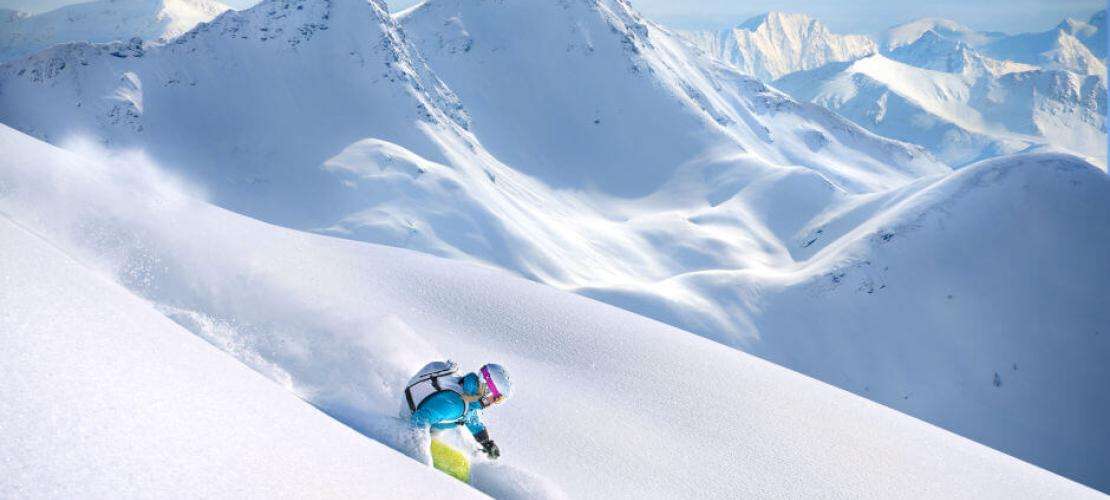
High-precision GPS helps prevent avalanches
Ski season is around the corner. Don’t forget to check the avalanche conditions of your ski slopes and around your ski resort. Avalanches can be a real danger for adventurous off-piste skiers as well as for the small towns down below. There are over 1000 avalanches occurring every year in the Swiss Alps alone. Local communities put up steel fence barriers along the slopes to prevent avalanches from ever happening near their town. To build such snow barriers, steep rock faces and cliffs need to be surveyed with utmost precision. Read on to find out how a Swiss company uses a drone, with a built-in high-performance GPS receiver, to survey this harsh area in hours.
Davos is a famous resort town located in the Swiss Alps near the Austrian border. Thousands of tourists come to Davos every year to ski and to enjoy the mountain views. Above the city, towers the magnificent Schiahorn mountain, its slopes lined with pistes and chairlifts. To protect the town and the skiers, Davos community plans to build avalanche barriers along the steep slopes. The ideal location is along one square kilometer on the Parsenn slope, right above a ski piste. To plan the works along this uneven rock face, a detailed 3D reconstruction of the area is needed. But how to scale this mountainous region where just getting to the survey site would be a rock-climbing feat?
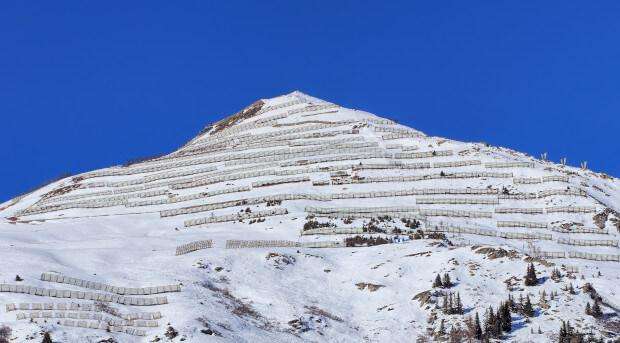
High-accuracy GNSS to scope the slope
Swiss-based survey and mapping company Darnuzer Ingenieure AG has the expertise in surveying these snowy peaks. Their WingtraOne fixed-winged drone, features a top-quality camera, combined with a Septentrio high-performance GNSS receiver. It can fly at 150 m altitude making orthophotos without the need of GCPs (Ground Control Points) or a real-time base station link. GCPs are markings on the ground with a known location, used as a positioning reference when making orthophotos. Placing GPSs on the ground is time consuming work. Darnuzer’s surveyors can get their job done over 4 times faster with the Wingtra drone where no GCPs are required. After a couple of hours of flight, the survey job is done.
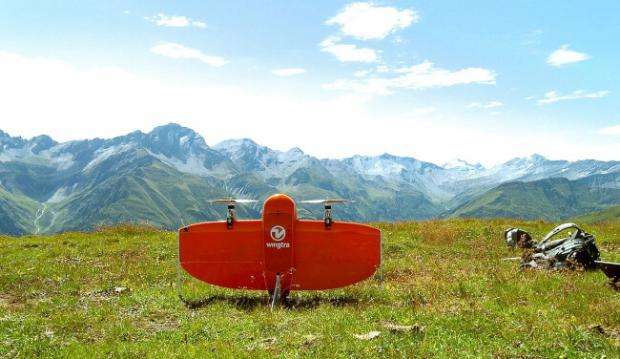
The WingtraOne VTOL drone uses a high-precision GPS/GNSS receiver to accurately geotag its images.
Post-processing for cm-accuracy
The WingtraOne VTOL drone Vertically Takes-Off and Lands on a rocky slope and flies automatically, meaning no drone pilot training required and no risk of damaging the payload with “belly” landings. A single surveyor takes the drone to the rocky Parsenn slope during the summer season, capturing ground images without snow needed for the 3D model. As the drone flies, it takes high-resolution images which are immediately geotagged and time stamped. Darnuzer’s surveyors then post process the images for RTK (Real Time Kinematic) centimeter accuracy using the intuitive Wingtra workflow, powered by the Septentrio post-processing engine GeoTagZ . The orthophotos are then processed by Pix4D software and a detailed 3D Digital Terrain Model (DTM) of the Parsenn slope is created.
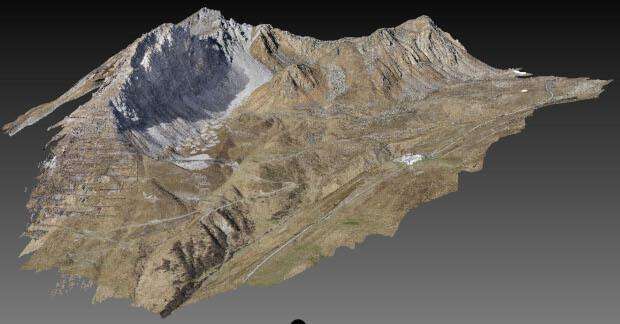
Even in this mountainous region, where peaks obstruct sky visibility, the GNSS receiver in the WingtraOne drone delivers continuous positioning thanks to its multi-GNSS*, multi-frequency technology. The valley is where the sky is obstructed the most, not only by the surrounding high peaks, but also by the buildings lining the streets.
“Even in the valleys where satellites visibility is low, we always get the positioning we need due to the receiver having access to several navigational satellite systems. The positioning accuracy we are looking for is generally 2-5 cm,” says Dr. Bruno Wirth, senior surveyor at Darnuzer Ingenieure AG. “The Wingtra system has worked out-of-the-box and we have never had any issues with interference thanks to Septentrio's GNSS technology .”
The wide-open space between the peaks provides few barriers for radio waves, which might be broadcast by near-by communication towers. Such radio waves also known as Radio Frequency Interference (RFI) can overpower GNSS satellite signals and interfere with GPS receiver operation, reducing accuracy or even causing loss of positioning. Robust interference mitigation technology is key to ensuring continuous and trustworthy positioning of the GNSS receiver.
After some meticulous work of removing trees and rocks by hand, Darnuzer’s smoothed-out 3D terrain model is ready. Finally, the avalanche barrier construction can begin, bringing a peace of mind to the skiers on the beautiful Parsenn slope and Davos residents.
Snow avalanches are not the only type of avalanches posing danger in the steep Alpine mountains. Stone avalanches and landslides are just as hazardous. The Val Bruna is a steep, rocky slope rising above the ski resort village of Müstair. Heavy rainfall erodes the soil, creating a potential landslide threat. Here too Darnuzer’s WingtraOne drone comes to the rescue. Every year the drone flies over the Val Bruna slope surveying soil movement. Precise measurement of ground movement is key in helping experts asses the risk of landslides in the coming year.
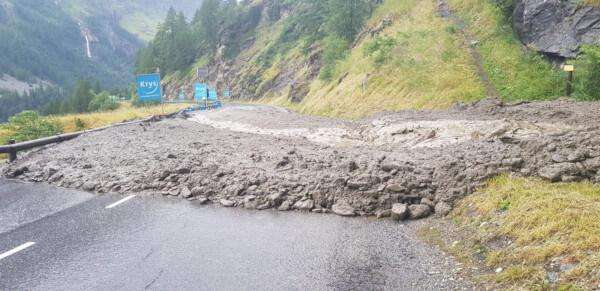
Aerial survey made easy
In the regions where just walking or driving is a challenge, aerial survey is the way to go. The WingtraOne drone flies through the sky enabling cm-level surveying, powered by the Septentrio GNSS receiver and post-processing engine GeoTagZ, without the need for GCPs. Accurate landscape models enable avalanche barrier construction and ground movement monitoring, bringing safety to the Alpine skiers and local communities so they can fully enjoy their next ski season.
*GNSS refers to Global Navigation Satellite System such as the American GPS, Russian GLONASS, European Galileo and Chinese BeiDou. These satellite constellations broadcast positioning and timing information which is picked up by the a GNSS receivers on Earth and used to calculate its global position.
摘錄自:https://www.septentrio.com/en/learn-more/insights/high-precision-gps-helps-prevent-avalanches
電話: 025-85577685
地址:南京市江寧開發(fā)區(qū)誠信大道990號優(yōu)尚天地3棟417室
企業(yè)微信
